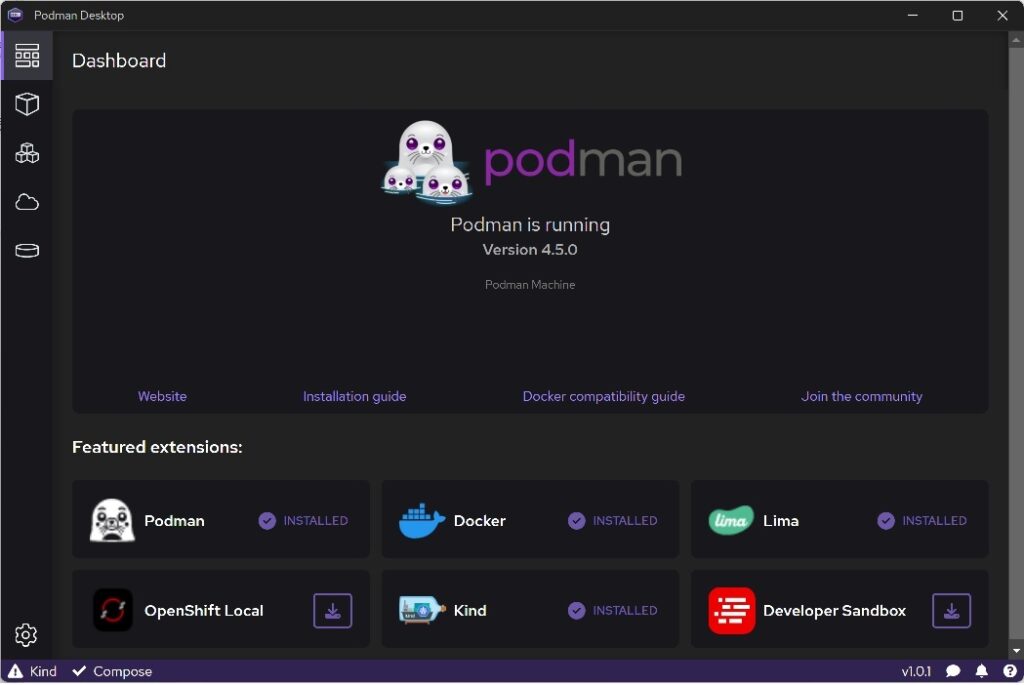
The RedHat-sponsored open source project Podman Desktop has hit general availability, with features including building and running containers, running Kubernetes locally, and connecting and deploying to remote OpenShift clusters, where OpenShift is Red Hat’s Kubernetes distribution.
“The main advantage of using a UI like Podman Desktop for container management, especially for enterprise developers, is that it simplifies the process of working with containers,” said Product Manager Stevan Le Meur in a post introducing the release. This is especially true for work with Kubernetes, since this is built in using Kind, a tool for running local Kubernetes clusters. The tool also integrates with OpenShiift Local. Podman Desktop can also pull, tag and push container images from multiple registries, including Docker Hub. Another feature is a built-in terminal allows ssh (Secure Shell) access to containers. Extensions are supported, including some support for user interface extensions built for Docker Desktop.
Podman itself is a Linux command-line tool for pulling container images and running them, with commands that are largely compatible with the Docker container engine. Podman can be run by a non-privileged user and does not require a daemon. Podman also runs on Mac and Windows, but works by running an embedded Linux, using a QEMU virtual machine on Mac, and on Windows, the Subsystem for Linux. Podman’s daemonless architecture is a security benefit that makes it suitable for use in production – though Docker can also run rootless.

Podman and Podman Desktop are less well-known than Docker and Docker Desktop, but interest in alternatives to the Docker offering increased when, in August 2021, Docker Desktop became a paid product for enterprises, having formerly been free. Then again, Docker has invested energy into Desktop since then, with new features including Dev Environments, which let developers configure an environment with the tools and code they need. Docker Desktop extensions allow third-parties to build plug-ins that integrate with other products or add new features. There is also Docker Scout, which analyses container images for vulnerabilities. Docker Desktop bundles local Kubernetes, with an option to start a single-node cluster on start-up.
The free nature of Podman Desktop though is an attraction, not only for reducing cost, but also for minimizing the friction of managing licenses. Competing with the more mature Docker, however, is a challenge. There are little issues, including that the Visual Studio Code Docker extension does not work properly with Podman. According to this GitHub comment, “currently the only option is to downgrade the Docker extension. A quick fix is possible … but the Docker extension team has opted to instead provide full explicit support for podman (no ETA given so far).”
A developer on Hacker News said that “We are a Podman shop. Podman itself works fine, but for Compose we kinda have to use docker-compose (and very soon “docker compose” due to the former getting deprecated in a week). I found several major and minor issues when I fed our Compose files to podman compose.”
Another free option for Docker Desktop refugees is Suse’s Rancher Desktop.
